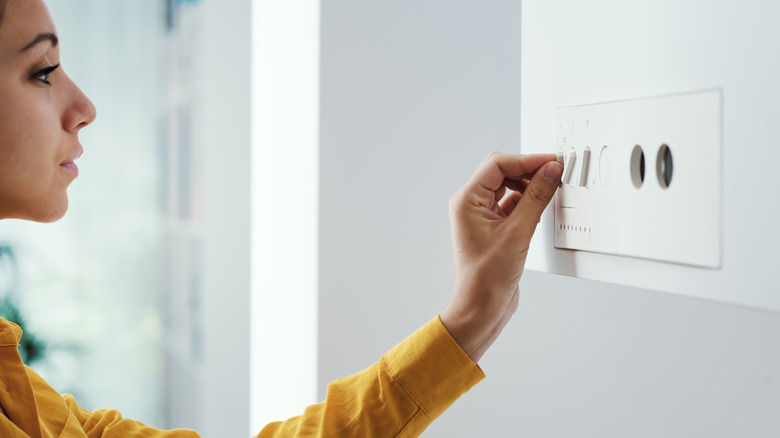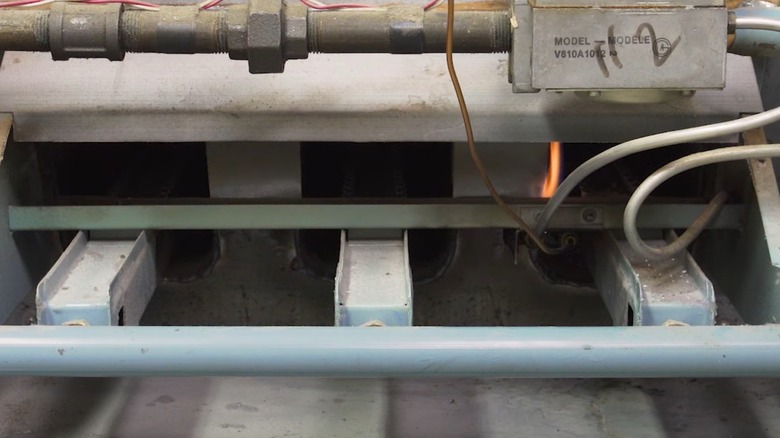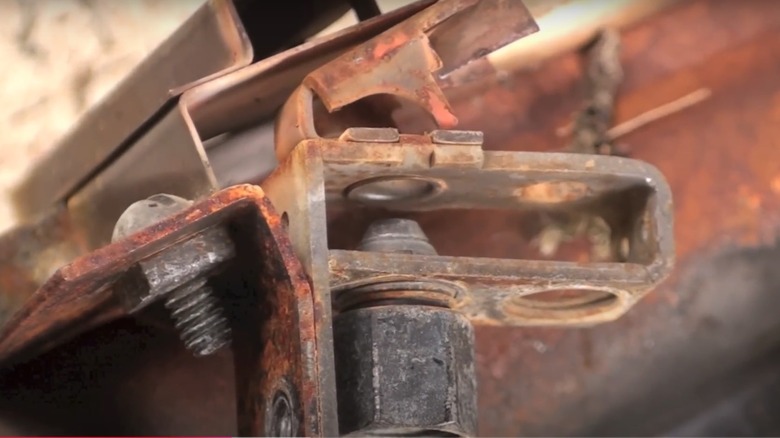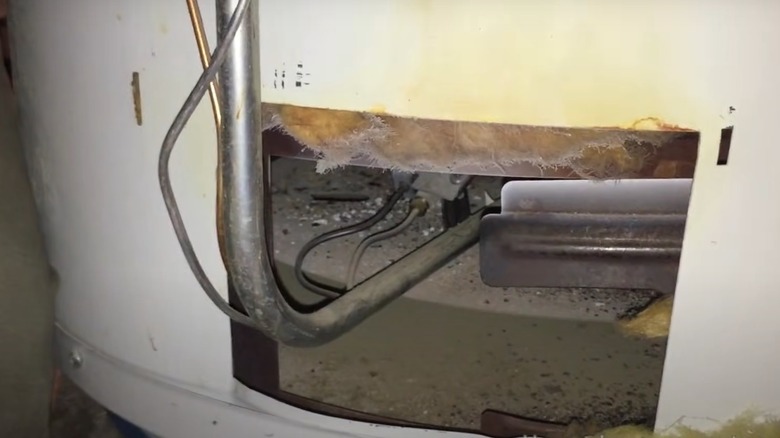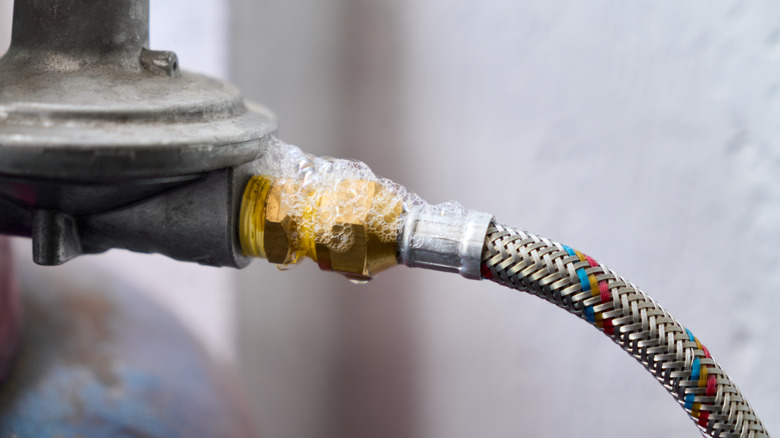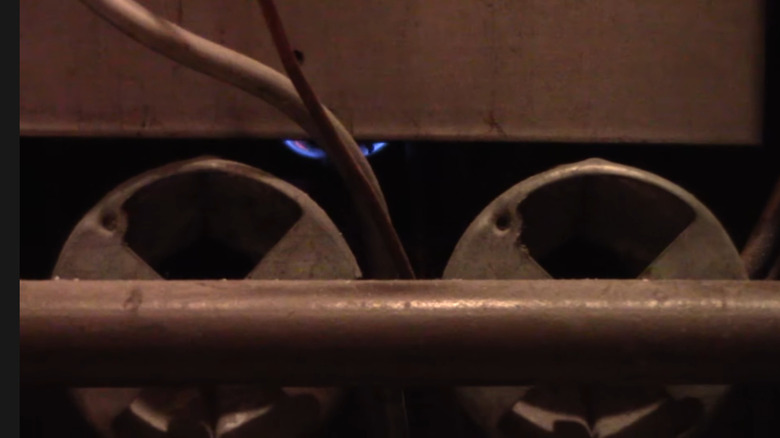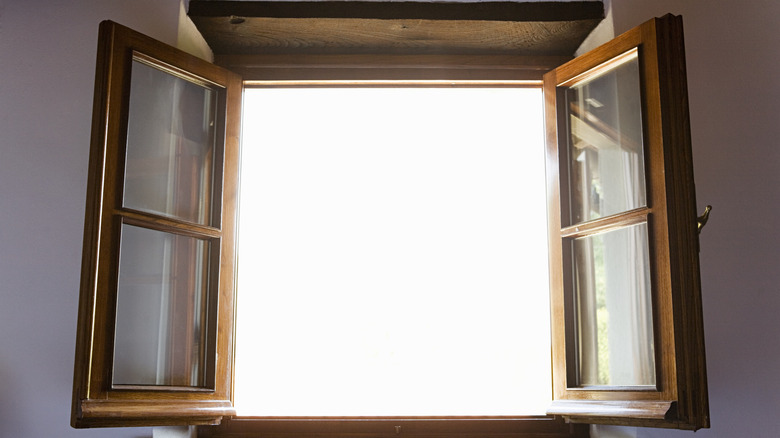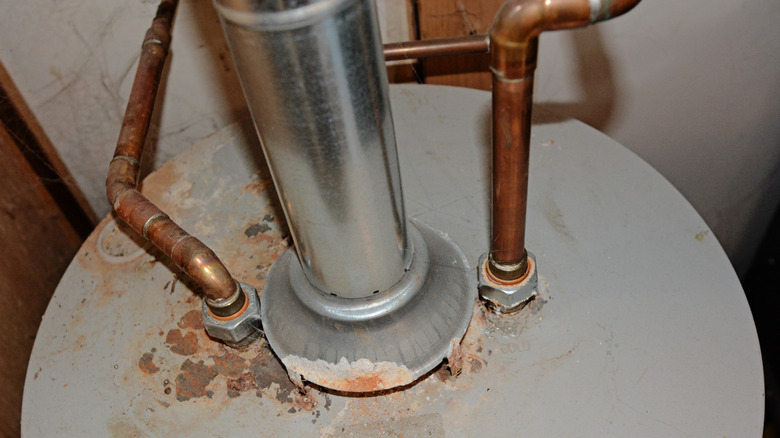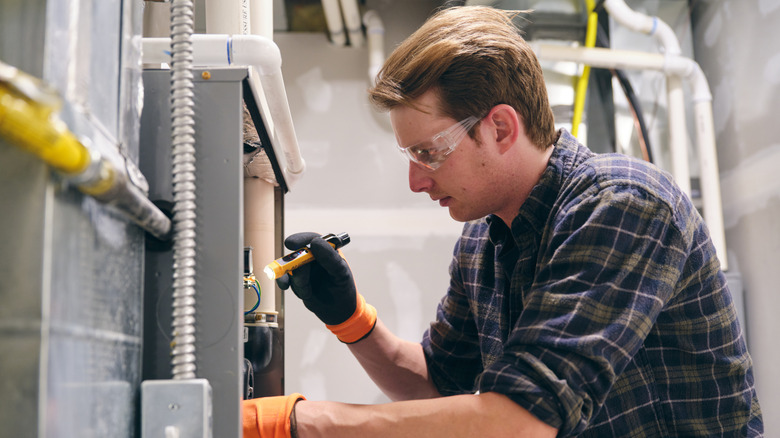Top Reasons Why Your Gas Pilot Light Keeps Going Out Unexpectedly
We may receive a commission on purchases made from links.
It can be frustrating when a gas pilot light goes out. Not only will your gas furnace, fireplace, stove, or water heater stop working, but you'll need to cease what you're doing to find and relight the pilot light on your furnace or other appliance, as the flame is what's responsible for igniting the gas burner and ensuring your gas-run appliances are functioning properly. If you don't know why the pilot light was extinguished in the first place, relighting it may not deliver the results you're expecting, either. Without resolving the underlying cause, the pilot light may go out again, leaving you back at square one — and in a cold home.
A pilot light going out can also be hazardous. If gas continues to flow, it can build-up in your home and could even open the door for an explosion when you relight the flame. To uncover some of the most common reasons why a gas pilot light might keep going out unexpectedly, we reached out to two HVAC experts. They shared their knowledge with us in exclusive interviews with House Digest that can help you get to the root of the problem and ensure that your gas appliances are operating safely and properly.
An issue with the thermocouple can cause a pilot light to go out
The thermocouple's job is to prevent gas from leaking. If the pilot light goes out, it is designed to turn off the flow of gas by closing the gas valve. However, if the thermocouple isn't working properly, it can prevent the pilot light from staying on. During an exclusive interview, Justin Cornforth, an HVAC expert and the owner of Ace Home Co., tells House Digest that if the thermocouple is "dirty, misaligned, or faulty, it may not generate enough voltage to keep the gas valve open."
Without addressing this problem, gas won't be able to flow, and the pilot light won't stay lit. Depending on the specific issue, Cornforth says that you'll either need to reposition the thermocouple, clean it, or replace it. You can remove residue that might be interfering with the thermocouple's ability to do its job by rubbing it with some fine-grain sandpaper, like the 3M General Purpose Very Fine Sandpaper. Before you start cleaning, however, it is imperative to turn off the gas and let the appliance cool down. If cleaning isn't sufficient and the thermocouple needs to be replaced, you can contact an HVAC professional to help. Another one of our experts, David Lewis, owner of Mission AC & Plumbing, tells House Digest exclusively, "Replacing a thermocouple is a relatively simple fix that we do quite often." The part is comparatively inexpensive (typically costing less then $30). To have it replaced you can expect to spend between $100 and $300 on the part plus labor.
But before you call up an HVAC company, Cornforth shares a tip to help you identify whether an issue with the thermocouple is indeed the reason that your pilot light keeps going out: "Run your hand around the appliance to detect airflow that might extinguish the pilot light. Light the pilot and hold down the gas valve. Release it after 30 seconds. If the flame dies instantly, the thermocouple likely needs attention." This way you can eliminate the chance that drafts might be putting out the pilot light (more on this later), and be certain that the thermocouple is the cause.
A blocked pilot orifice can prevent enough gas from flowing to keep the light lit
The pilot orifice is an essential part of the ignition system on a gas appliance. It is a little cap that has a small opening, which allows gas to flow to the pilot light and keep it lit. As you might imagine, if the hole gets blocked or dirty, it can interfere with the workings of the system. "Over time, dust and debris can clog these components, causing the flame to weaken or go out," explains Lewis. Fortunately, this is typically not a safety hazard, because the flow of gas should be stopped by the thermocouple. However, you won't be able to light the pilot light as long as the blockage remains.
Both Lewis and Cornforth recommend cleaning the orifice to restore the flow of gas and enable it to light the pilot light. Cornforth highlights compressed air as a good cleaning tool. Cans of compressed air — such as Office Depot Cleaning Duster — can help you target the blockage using a strong stream of air. Consider adding this to your maintenance routine to prevent blockages — just make sure the gas is always turned off before spraying the compressed air.
Without sufficient gas pressure, a pilot light won't stay lit
If there is not enough gas pressure, the pilot light often won't remain lit. According to Cornforth and Lewis, there are a few potential causes of low gas pressure. One Cornforth highlights is a partially closed gas valve. He recommends adjusting the air shutter to ensure enough gas is able to get through. If you live in the mountains or another higher altitude region, Cornforth says, "air pressure changes can cause improper combustion and extinguish the pilot light." In these cases, he explains that you might need to hire a professional to recalibrate your gas valve to account for higher altitude-specific needs. Otherwise, "If it's not your case and the gas valve is fully open too — inspect the gas line for damage, and contact your gas provider to verify there's adequate pressure in the system."
Lewis also chimes in on the gas line issue, noting that if your furnace keeps turning off, and you are also having problems with other gas appliances, the gas line is likely the cause. "This usually requires a call to your gas company to check the pressure coming into your home," he explains. A professional can also check the line for any damage to make sure that isn't the reason for the lower pressure.
A gas leak is a serious issue that can also impact your pilot light
If your pilot light isn't staying lit, it is also possible that you have a gas leak. Cornforth says, "Any weird sounds indicate loose connections or gas leaks, to exclude the [latter], smell the air around you, and if you [smell] rotten egg odor — shut off the gas supply and contact a professional immediately!" Gas leaks can be deadly. First, it is unsafe to inhale natural gas — and can lead to natural gas poisoning. Second, if there is a gas leak, the excess gas in the air can put your home at high risk of an explosion because of how flammable it is.
Fortunately, it is not likely that a gas leak is the reason your pilot light is not staying lit. The thermocouple in modern gas appliances works to prevent most gas leaks by shutting off the valve if the pilot light goes out. That being said, if you ever suspect a gas leak, don't remain in your home. Leave immediately and call the fire department. Though a gas leak is likely out of your control, stay ahead of the game as much as possible by scheduling routine maintenance, inspecting your appliances regularly, and looking for any signs that your gas fireplace could be dangerous.
Without the proper air-to-gas ratio, it is unlikely that a pilot light will stay on
If the ratio of air to gas is not correct, the pilot light may be too weak or not stay on entirely. Cornforth explains, "A weak, small, or yellow flame may indicate an improper air-to-gas ratio or a problem with the gas supply." With the right ratio, the flame should be blue and steady.
If your flame is too small, Cornforth recommends adjusting the pilot light screw to modify the amount of gas that is flowing to the flame. Continue adjusting until the pilot light flame is nice and blue and reaches a height between 1 and 2 inches. After making these adjustments, Cornforth says, "inspect for blockages in the air intake and clean any dirt that you find." This will help ensure the right ratio of gas and air going forward.
Drafts can blow out a pilot light
If your fireplace, water heater, or furnace pilot light goes out, it might not be an issue with the appliance itself, or the gas line either. "Draft issues can also cause pilot lights to extinguish. If there's a strong draft coming down your chimney or around your appliance, it can literally blow out the pilot light," explains Lewis.
Feel around the chimney, windows, and other ventilation setups around the pilot light. If you detect airflow, close the windows or take other measures to modify the flow of air to prevent the strong drafts from extinguishing the light. You can also check windows and doors for drafts using a candle. "If drafts are unavoidable, consider installing a draft hood or diverter to shield the pilot light," recommends Cornforth.
High humidity levels can corrode essential components and cause the light to go out
If you live in a very humid climate, it is possible that the excess moisture is adding to your problem of getting your pilot light to stay lit. Excess moisture can cause condensation. And, according to Cornforth, "condensation can corrode pilot components or disrupt combustion."
If your pilot light or the other components of the system are corroded, you can try cleaning them to remove the build up. Start by shutting off the gas and giving everything time to cool down. Then, use a brush — such as an old toothbrush — to gently scrub away any corrosion. If your efforts are unsuccessful, you may need to hire a professional to repair or replace the affected components.
Call a professional if your pilot light keeps going out
It is important to know what you can handle yourself, and what is best — and safest — left for the professionals. While relighting the pilot light is a relatively simple task, Lewis stresses the importance of hiring a professional if your pilot light goes out repeatedly, despite your best efforts. "Gas appliances can be dangerous if not handled properly, and it's better to fix the underlying cause than keep relighting the pilot," he cautions.
A professional can help diagnose the reason your light won't stay lit and make any necessary repairs or modifications to your system. Even if you are able to light your pilot light this time, it is still a good idea to schedule regular maintenance checks for your gas appliances. The technician will assess their performance, clean them up, and recommend any necessary repairs — preventing future issues. If you aren't currently encountering any problems, the best time to get your furnace inspected is late in the summer or early in the fall. This will make sure it is ready for the hard work it will need to do once the weather starts turning cold.
